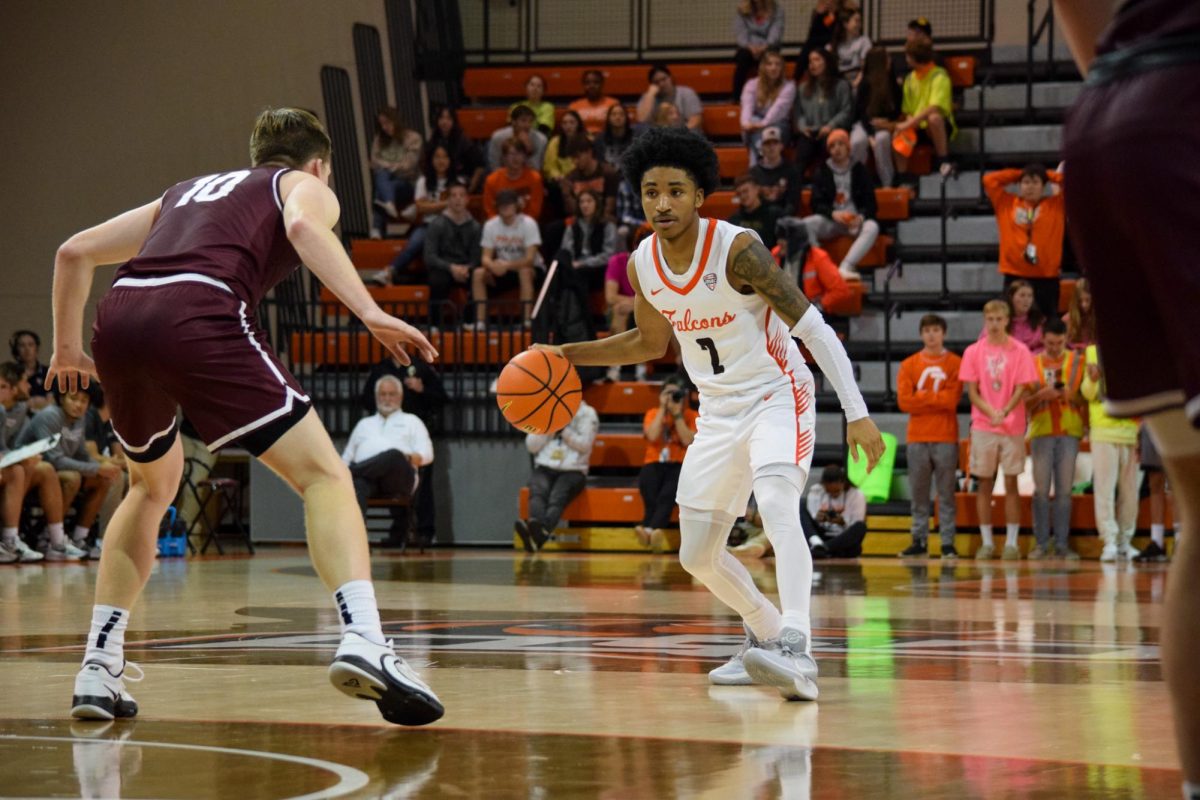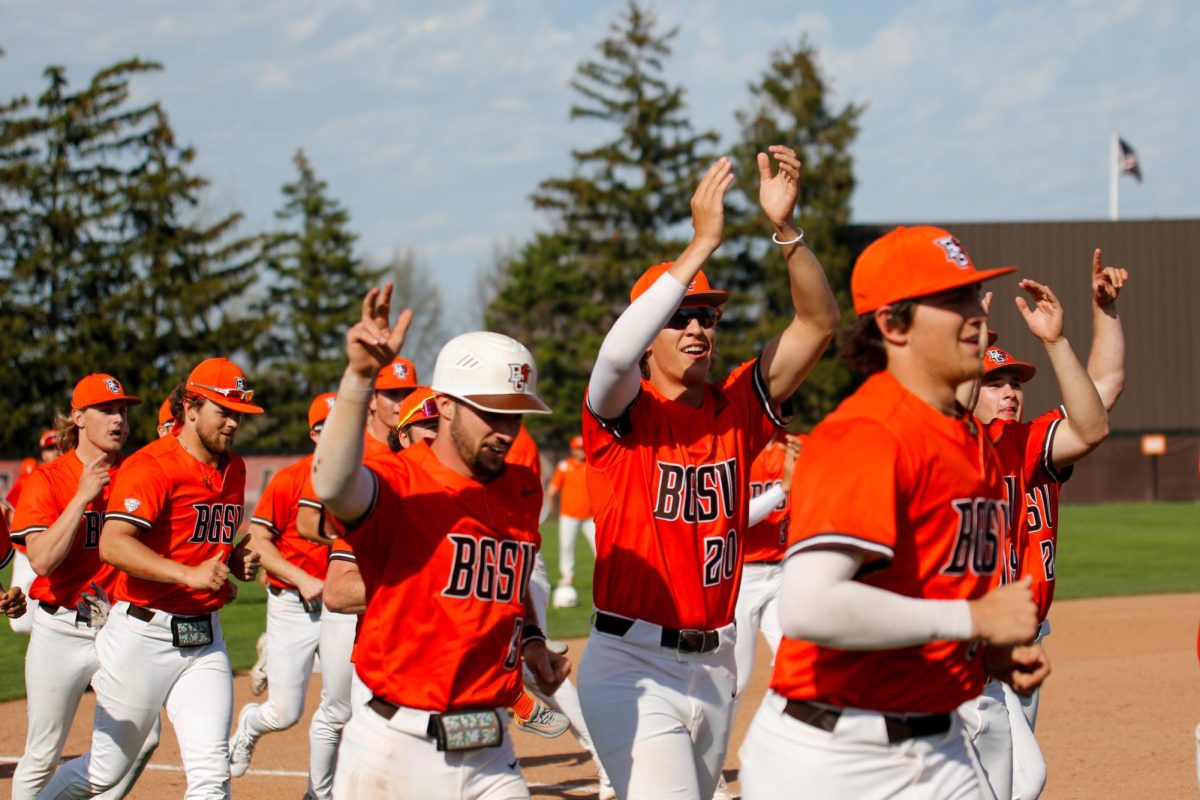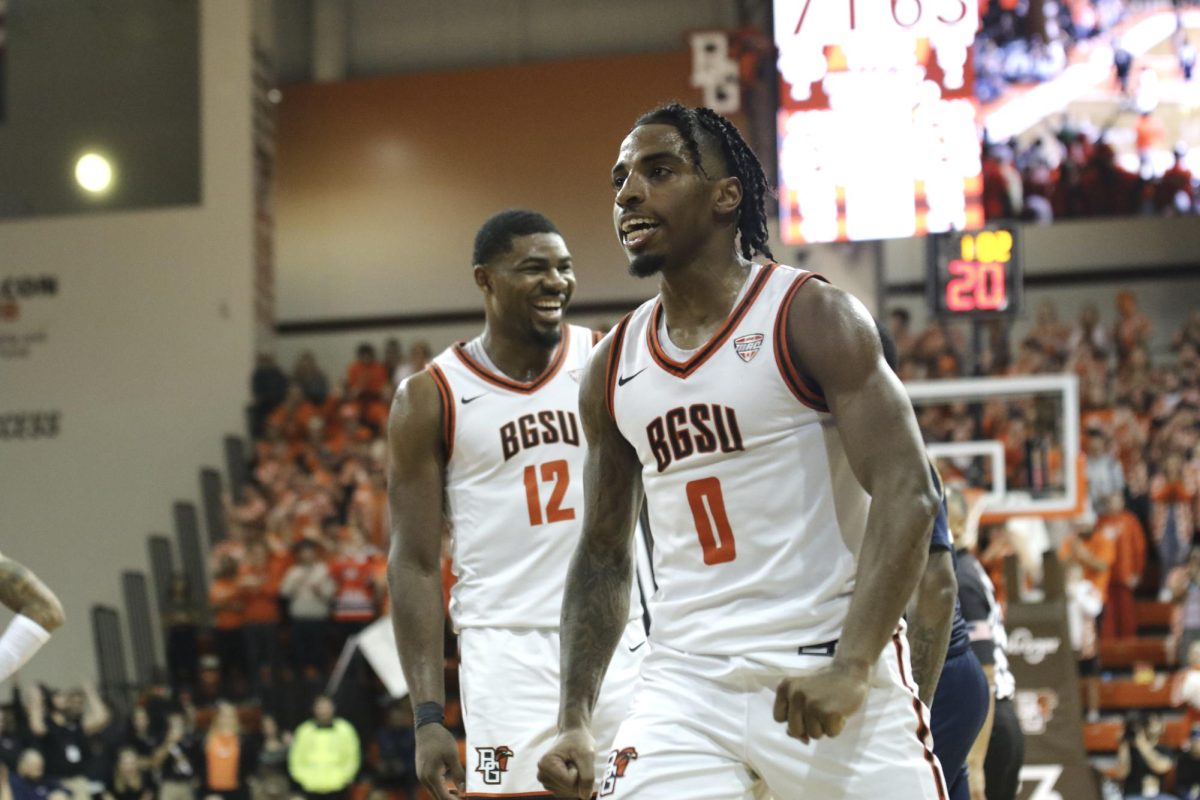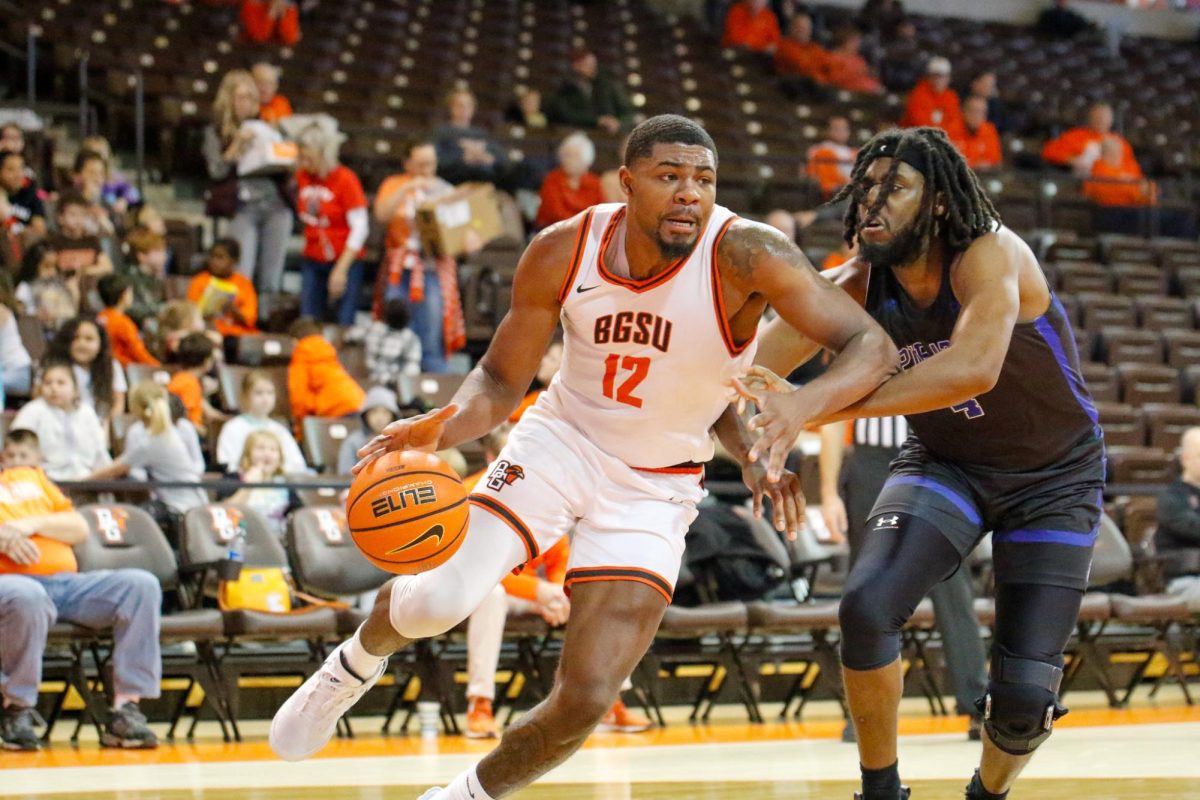Larry Weiss didn’t go to women’s basketball games until Fran Voll asked him if he would be at a game in 1968.
He couldn’t say no to the man who would later become the head coach, so he and his wife attended the game.
‘Low and behold, we became fans,’ he said and has followed the team closely for the last 20 years.
So when Weiss retired last August, President Ribeau gave him two tasks.One was the plan the University’s 100th anniversary celebration. The other was to compile a history of BGSU’s women’s basketball team.
Right now, Weiss is working with Sue Hager, the 1967-1976 women’s basketball coach, to create a living history of the team. In addition to a DVD, Weiss said they may also produce a book.
Every former head coach of the women’s program is still alive, so Weiss wants their stories recorded before it is too late. Recent greats like Curt Miller, Liz Honegger and Kate Achter will also be in the video.
With Hager’s help, Weiss is creating a list of players they would like to include in their compilation.
Weiss said their story needs to be recorded ‘while you can talk to the people who made it happen.’ He doesn’t want too much to escape their plans.
Hager has been able to add her expertise about the history of the game and what happened at BGSU.
When Hager was asked by President Ribeau to take part in this project, she said it would be a wonderful project because ‘nobody knows who [earlier players and coaches] are.’
There have been many women basketball players who’ve had an impact on and off the court and so much is happening now, she said.
‘None of this would be where we are today if we didn’t go back to the 60s,’ she said.
She wants the women who are playing today to be knowledgeable about their sport’s history: that there were so many different rules, no publicity, the coach had to fight for money and host tryouts.
‘This game has really progressed for these young women,’ she said. ‘I don’t think they [today’s players] know what transpired.’
The earliest photographs of a women’s sport team at BGSU are of basketball teams. Two literary societies – the Wilsonians and the Emersonians – competed against each other in 1914. Their photographs were in BGSU’s yearbook that year.
When Hager ran her first tryout session in 1967, around 150 women showed up. She whittled them down to two teams of 12. After the players were chosen based on their athleticism and coordination, they were taught how to play the game.
She had no assistant coaches. Students served as managers and set up the gym (which was in Eppler North), kept score and ran the clock. Uniforms weren’t provided. The teams’ wore pinnies, sleeveless shirts, on top of T-shirts.
Because there were no officials for women’s basketball at this time, physical education departments set up their own rating boards to train the coaches and other officiators. Hager said she and other area coaches would officiate for each other to avoid fees.
Money always made a difference to the teams, Hager said. They almost always traveled by car to away games, and they weren’t reimbursed for mileage.
If Hager decided to rent a school bus, she had to decrease the number of games the team would play, and a typical schedule had only 10 or 12 games.
The players were given some money for meals on away game-days. Hager said it was usually 50 cents for breakfast, $1 for lunch and $2.50 for dinner. This would translate to about $10 today, she said.
Since Hager has been involved with basketball for so many years, she’s been able to watch the game evolve.Early in women’s basketball history, players could shoot one-handed or underhand for one point and a two-point shot required two hands. There was no ineligibility.
Teams also played with a full-size ball, there were no substitutions and no timeouts. Players couldn’t touch or guard each other. Hager said if there was a collision, the players would apologize and they were always respectful of each other.
But she likes where basketball has gone today.There’s dedicated practice time and training facilities, along with many other amenities.
‘We’ve come so far,’ she said. ‘I just hope we never lose the good things we had.’


















